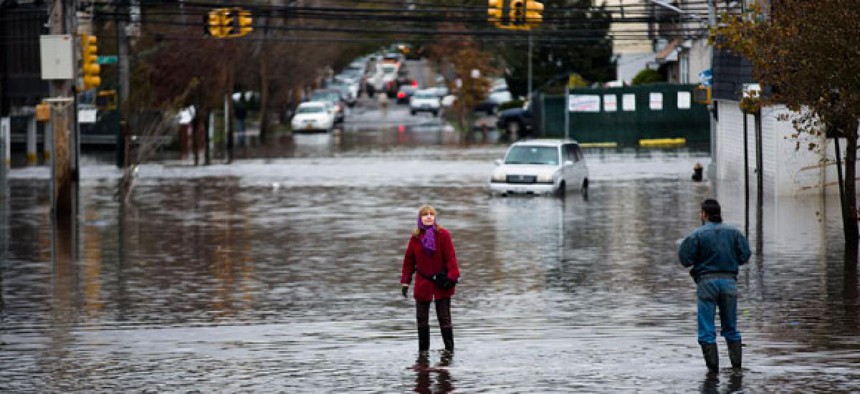Sandy bill includes $476 million for NOAA

John Minchillo/AP
Funds will help improve weather forecasts and repair or replace damaged systems.
The $50 billion Hurricane Sandy relief bill that awaited President Obama’s signature on Tuesday includes $476 million for the National Oceanic and Atmospheric Administration, with $96 million allocated for improvements in weather forecasts and $110 million for alternatives to long delayed replacements for polar satellites essential for accurate hurricane forecasts.
The 2013 Disaster Relief Appropriations Act provides NOAA with $50 million for long-term weather research programs, $25 million to improve forecasting, including hurricane intensity forecast capabilities, $13 million to beef up the National Weather Service information technology infrastructure used to crunch data from weather satellites and radars and $8.5 million for forecast equipment, including supercomputers.
NOAA, the Defense Department and NASA have struggled since 1994 to develop a new fleet of polar orbiting satellites. The two-satellite Joint Polar Satellite System, slated to replace current and aging Polar Operational Environmental Satellites, faces delays of between 18 months and five years.
On Nov. 19, 2012, NOAA put a notice in the Federal Register saying the agency planned to broadly explore all available options, such as substitute satellite observations, alternative non-satellite data, weather modeling, and data assimilation improvements to fill this satellite gap. The Sandy bill provided $110 million in funds for a weather satellite data mitigation reserve fund.
The bill also allocated $50 million to NOAA for mapping, charting and geodesy services and marine debris surveys for coastal states hit by Sandy, $44.5 million for repairs and upgrades to its fleet of P-3 and Gulfstream IV hurricane hunter aircraft, and $7 million to repair and replace ocean and coastal observing and monitoring systems damaged by the storm.
NEXT STORY: Soup, a sandwich and deficit reduction



